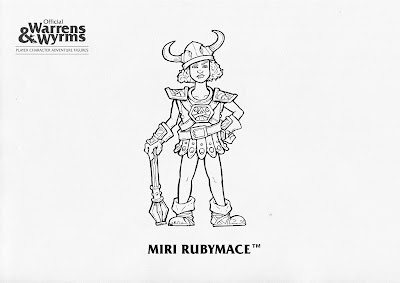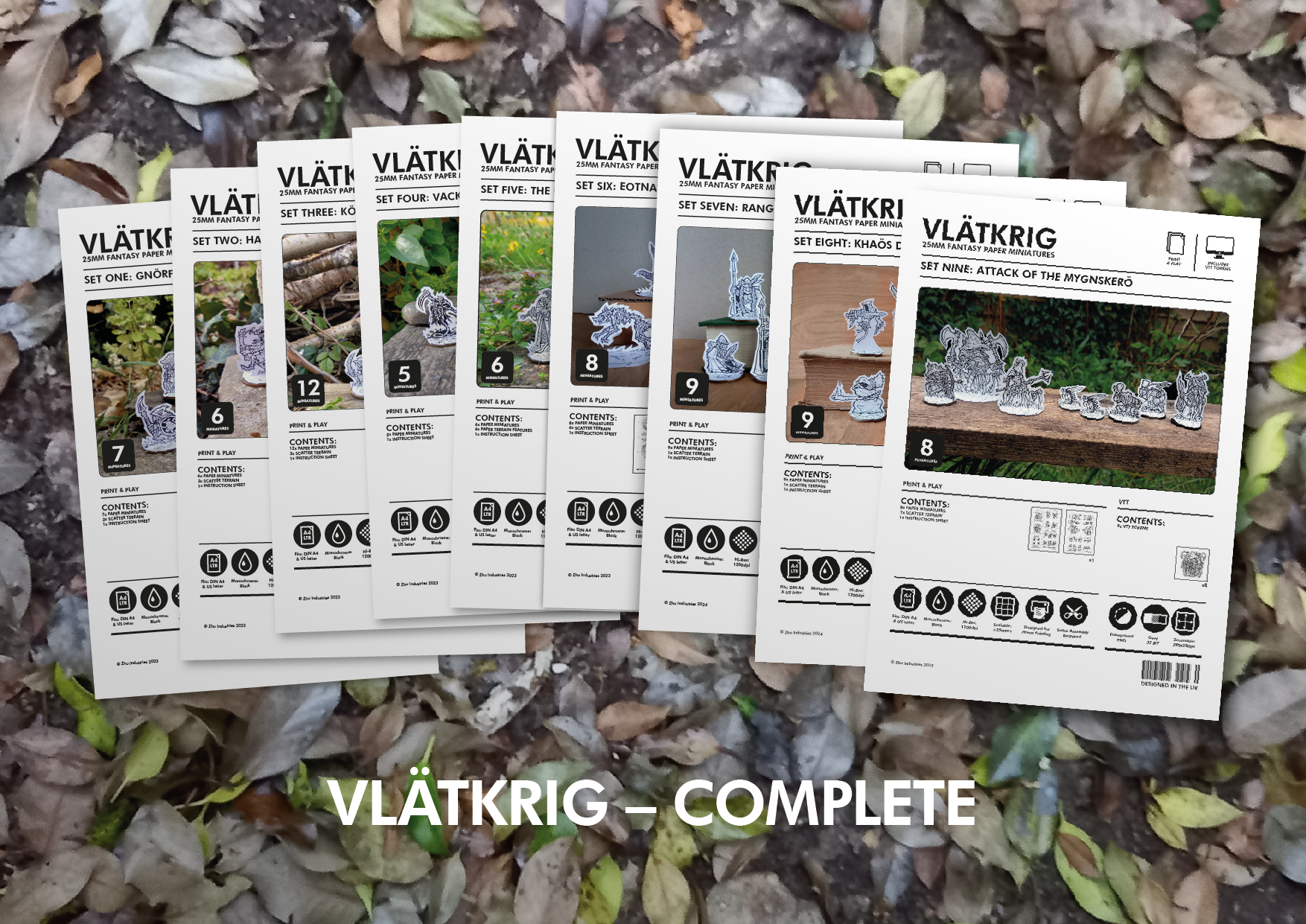First published in 1974, Dungeons & Dragons is a roleplaying game by Dave Arneson and Gary Gygax in which players take on character roles distilled from 1970s Swords & Sorcery genre tropes and immerse themselves in an imaginary fantasy world of monsters and adventure. By the early 1980s, the games commercial success led Gygax to seek merchandising deals for the burgeoning D&D brand, including toys, colouring books, lunchboxes, stationary, etc. and eventually heading off to Hollywood to secure D&D as a mass-media property. The main product of this endeavour was the 1984-85 animated Dungeons & Dragons tv-series produced by the American Marvel Productions (set up to produce Marvel IP into cartoons, notably Spider-man, himself no stranger to playing D&D-esque games) and the Japanese TOEI animation studio (responsible for everything from Transformers to Dragonball).
The world of Dungeons and Dragons was brought to the small screen. Taking it's visual lead from the designs for the 1982 LJN Advanced Dungeons & Dragons toy range which were based on the dynamic, comic-book illustrations of Tim Truman and the clean, rich colour paintings of Larry Elmore and Jeff Easley, this was D&D at it's most pop art, slick and commercial, a far cry from the original games black and white, low production, high imagination, diy ethos. While several of the LJN toy range characters and monster designs turn up in the cartoon series, the character designs for the Adventuring Kids generally follow well established fantasy tropes from outside the D&D factory - Eric the Cavalier is clearly derived from Hal Fosters Prince Valiant, Bobby the Barbarian from Marvel's Conan, Presto the Magician from Disney's Sword and the Stone version of Merlin etc. Well worn references that make the characters and their types easily recognisable to an audience familiarising itself with late-midcentury fantasy media tropes.
"Fear not... Ranger, Barbarian, Magician, Thief, Cavalier, and Acrobat."
- Dungeons & Dragons (1984)
The appearance of a
D&D cartoon was by no means universally welcomed as a good thing. Outraged British
D&D players took to the letters pages of
White Dwarf Magazine (back in the 80s, before WD became one long
Warhammer advert) to decry the LJN "bendy"
Dungeons & Dragons plastic
toys, to complain about the 'kiddification' of their hobby and how the cartoon misrepresented the game. This possibly happened in the USA as well, but as the main roleplaying game magazine in the US -
Dragon was strictly controlled by the company that published
D&D, dissenting opinions tended not to get published. Part of the perceived misrepresentation was the transformation of the world of
Dungeons and Dragons from being a self contained secondary world (like
The Lord of the Rings), into a portal fantasy (like
The Lion the Witch and the Wardrobe) where contemporary characters, in this case, our cast of teenagers, are transported into a fantastical world as themselves, rather than playing avatars within an imaginary space.
The idea of "American teenagers transported to the Dungeon Dimensions" presents a reasonable answer to the question of what might an 80s D&D movie have been like had Gary Gygax managed to get it off the ground. The teen-movie angle adds a another layer of signification, not just presenting the classic D&D player character classes, but blending and juxtaposing Swords and Sorcery derived imagery with American Teen Movie tropes - something like the infamous anti-D&D movie Mazes and Monsters (1982), but gone right...
 |
| What if The Breakfast Club formed a D&D group? |
The high pope of 80's teen movies was undoubtedly director John Hughes who carved a name out for himself and leading actress Molly Ringwald, through the mid 1980s, charting the ups and downs of suburban and small town American adolescent-hood. It's unlikely any kid growing up in the 80s escaped the decade without having seen at least one, if not all of Hughes moves, somewhere between cult classic and mainstream success. The Breakfast Club (1985), follows a group of American teen schoolkids on an epic quest of self discovery, snogging in stationary cupboards, impromptu group therapy, running in the corridors and smoking dope in the school library all during a single Saturday detention.
"Sportos, motorheads, geeks, sluts, pinheads, dweebies, wonkers, richies..."
- Ferris Bueller's Day Off, John Hughes (1986)
The themes of social cliques, stereotyped identities and roles played by high-school teenagers echo throughout all of Hughes movies. Much as Gygax and Arneson had distilled and enshrined midcentury Sword & Sorcery character tropes into D&D, Hughes distilled and enshrined Teen Drama character tropes into his movies. It's important to remember the entire concept of "The Teenager" was invented by Don Draper in the 1950s as a way of selling soda-pop and rock and roll records, the concept didn't really exist before then, and the social dynamics and trends of 1950's continues to haunt the concept to this day. By the 80's the Teeny-bopper cliques of Socs and Greasers, expressed in Francis Ford Coppola's film adaptation of 50's throwback The Outsiders (1983) - had become Hughes Richies and Motorheads, the tropes endlessly regurgitated permeating the pop-culture landscape in recognisable but mutant varieties.
The Breakfast Club is undoubtedly a classic of it's time. The overall message of empathy and understanding dissolving apparent social divides, with it's quest for identity, championing the underdogs, sub-Philip Larkin observations on parents, there was much to appeal to an 80s angsty teen. The film shows casual drug use in a not completely negative light, while the First Lady's Nancy Regan's 'Just Say No' anti-drugs campaign was in full swing at the time, giving it a slightly rebellious, transgresionary edge as does the characters revelation that made up social categories are, indeed, just as made up as any D&D role.
The movie is widely regarded as being let down in the final act by the make-over of Ally Sheedy's character Alison Reynolds, whose final scene transformation from her cute casual-goth style for an awkward formal-preppy look is viewed as a mis-step on many levels. The films portrayal of the female characters as datable decorative commodities is dubious, and the message that social acceptance is obtained by code switching from the 'rebel' to the 'hegemony', is required for the female, but not male characters, to gain acceptance always felt suspect. Then again, most people acknowledge the all important, titular prom dress worn by Molly Ringwald's Andie Walsh in Pretty in Pink (1986) is pretty awful as well, so perhaps what people really find objectionable is Hughes terrible 80s fashion sense. Meanwhile Hughes musical direction including Tears for Fears, Psychedelic Furs, The Smiths, New Order, is impeccable in it's bang on-trend post-punk credentials - and a huge inspiration for bootlegging Night Terrors OST / inspiration playlist on a 5 pack of TDK D60's.
While Hughes films openly touch on ideas of identity-formation and class, with the themes of rich vs. poor, and high-school clique tribalism, the casts are almost entirely caucasian. Unfortunately the only non-white character with any screen time at all in any of Hughes films is the knob joke named Long Duk Dong (Sixteen Candles 1982) an excruciating caricature of a Chinese exchange student, not even a Chinese American, and whose every appearance is with pinky-plonky stereotyped 'Chinese' music. Fortunately in the 7TV Tangent Universe two characters have been cast from African-American backgrounds. Spreading the net a little wider, reflecting the greater diversity of the D&D cartoon and perhaps a more grounded portrayal of the 80s High School experience.
So there we have it, actors playing american teenage movie character tropes, playing Dungeons & Dragons characters. Our Adventuring Kids didn't magically transform into their Fantasy characters but are instead placed inside the costumes, and given their accoutrements. Imagineering the drawings as Cartoon model sheets for an animated series based on Warrens & Wyrms, the alliteratively titled hit roleplaying game and cross-media property of the 7TV Tangent Universe, got to work doing the drawing... it's time to meet the team...
The Gamesmaster. Based on Molly Ringwald in The Breakfast Club. The Dungeonmasters robes transformed into a loose fitting, off the shoulder batwing sweatshirt. Being the easy going, confident leader of the pack, full of ideas and really quite excited about the whole thing. "Hey guys, I've got an idea!".
The Paladin. Based on Gary Coleman (best known for playing Arnold in
. Again, like the Gamesmaster, the response to being inside a D&D adventure one of excitement. Sir Stannar's oversized full plate armour features a lion motif, use as a chivalric heraldic device and in reference to the African heritage of the character. Incidentally in one episode of the sitcom
there's a whole bunch of AD&D books on display in the shop. "To Victory!"

























